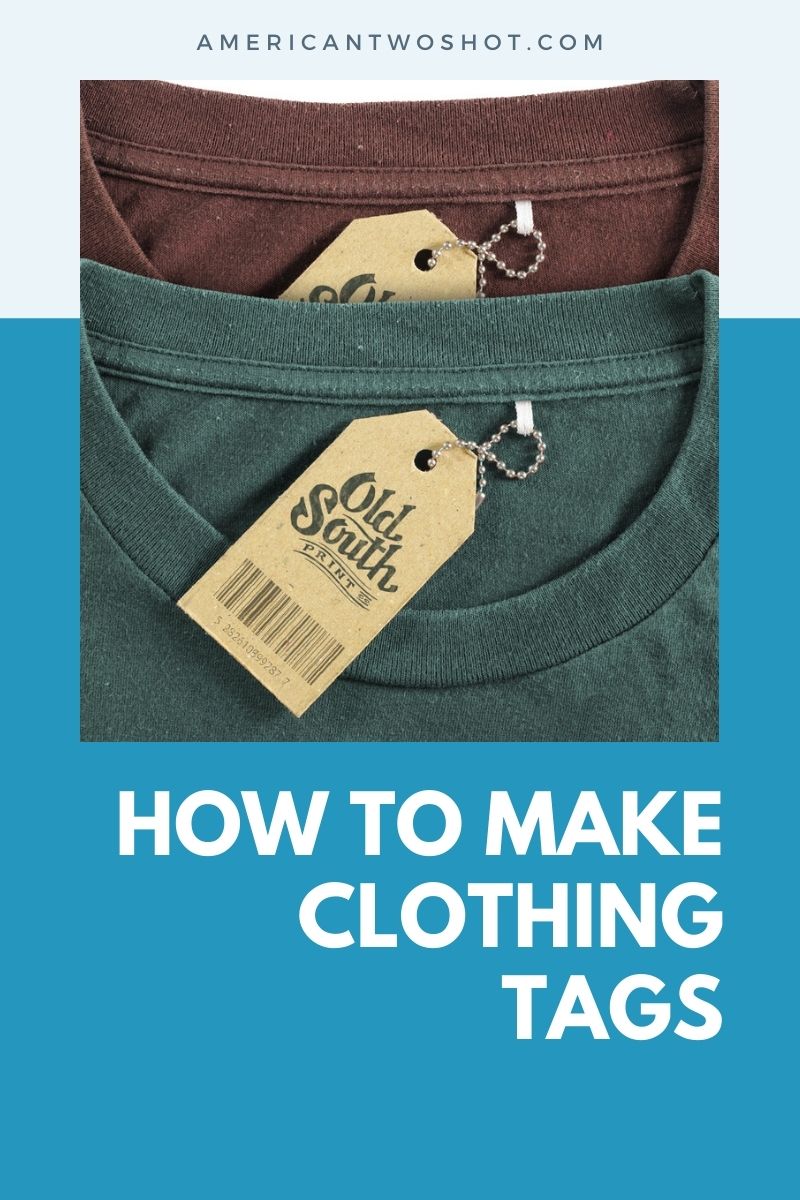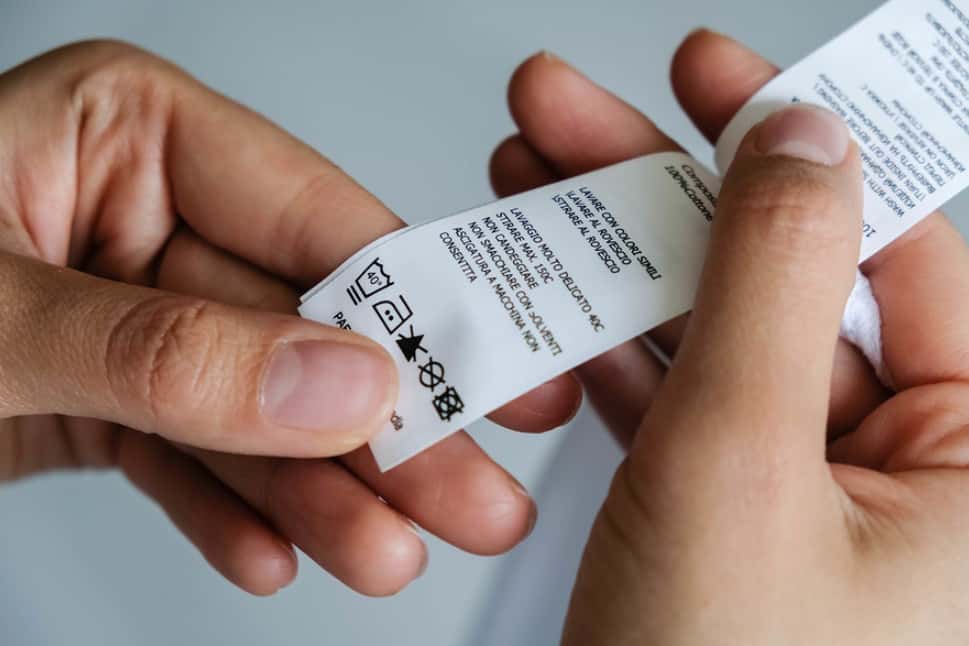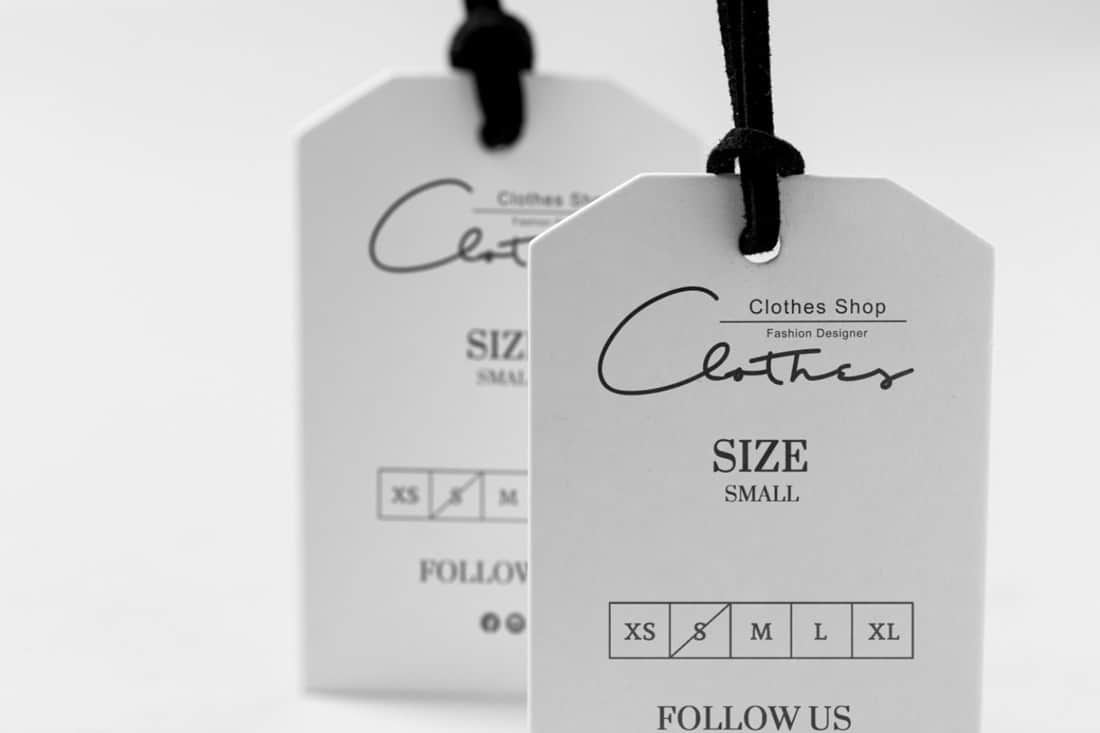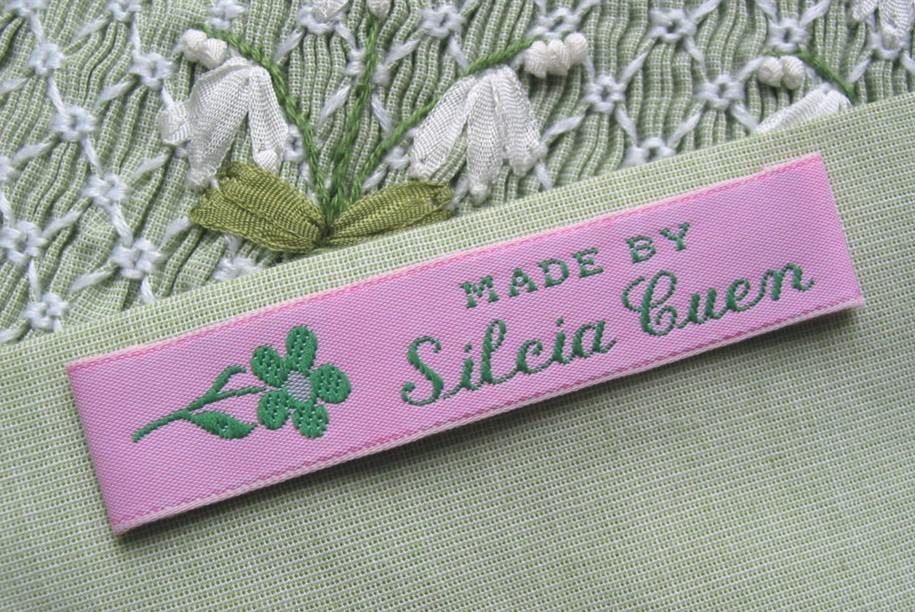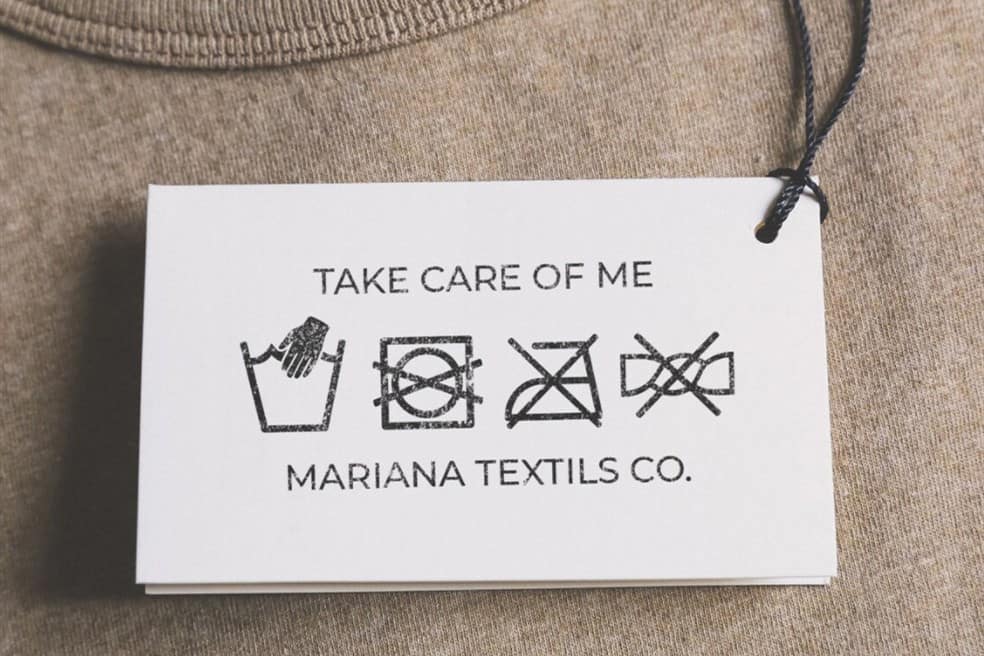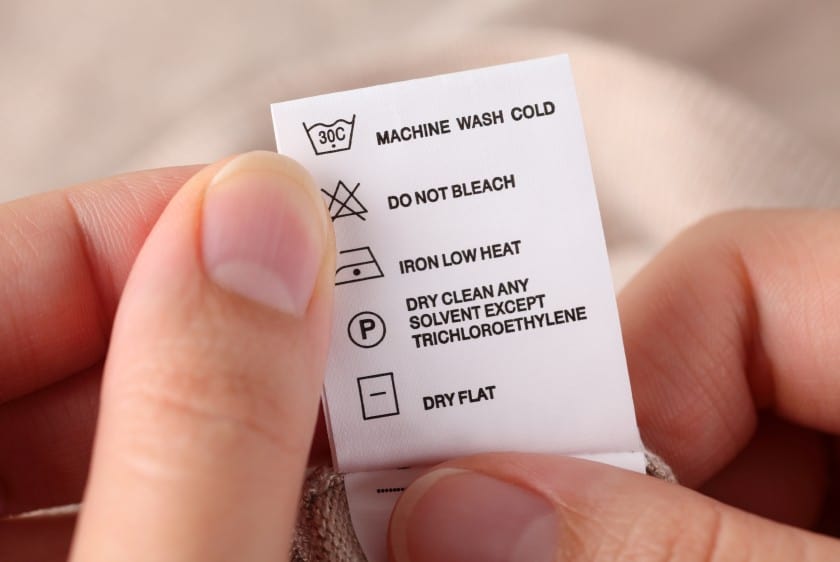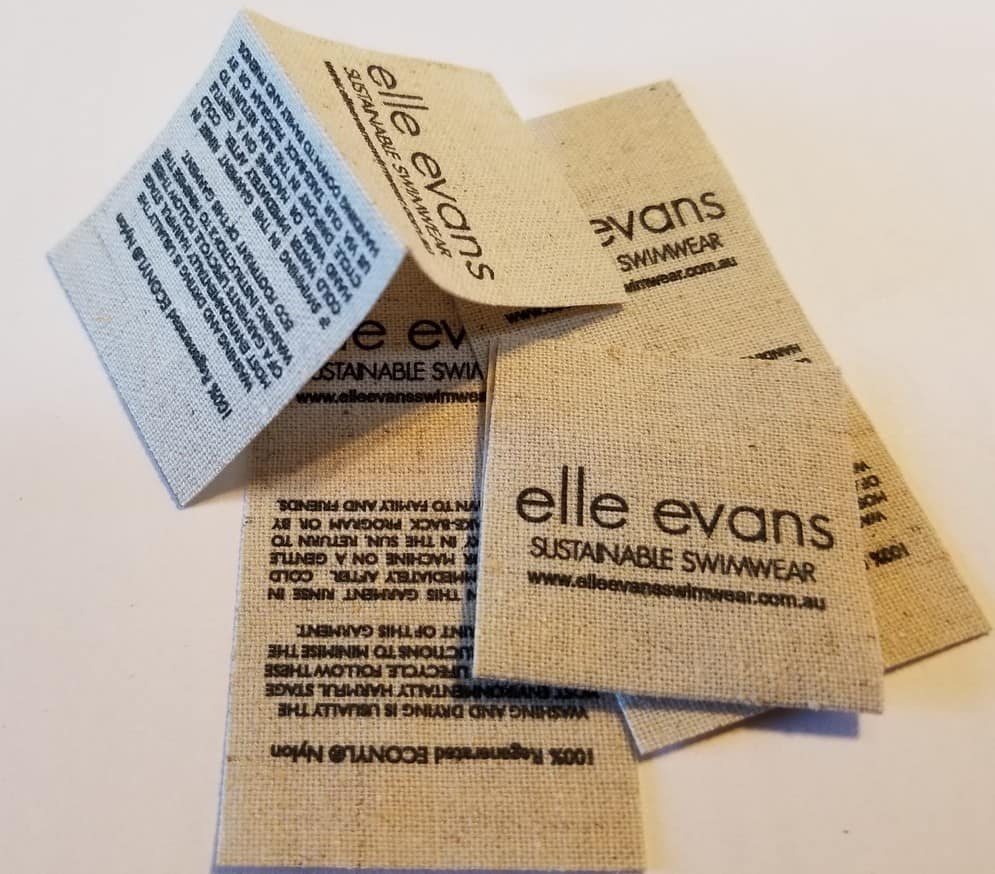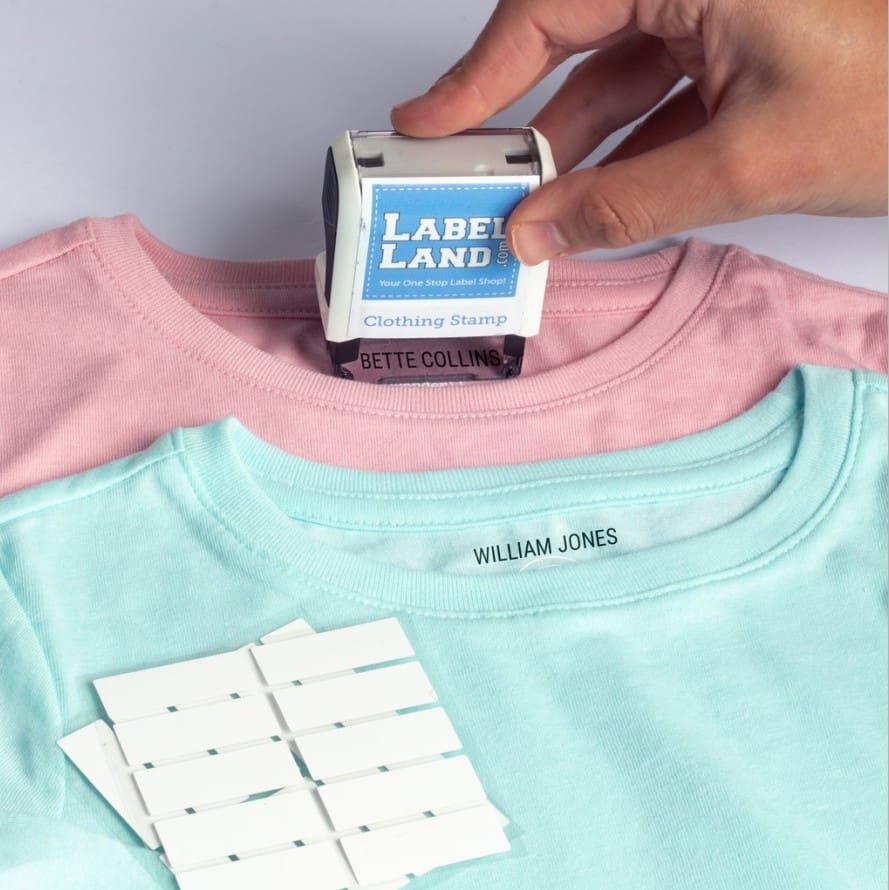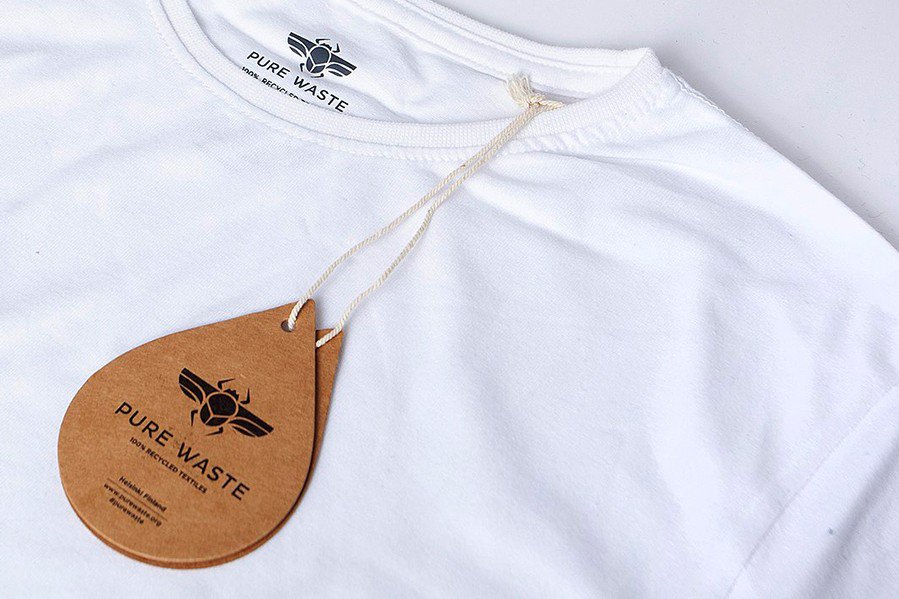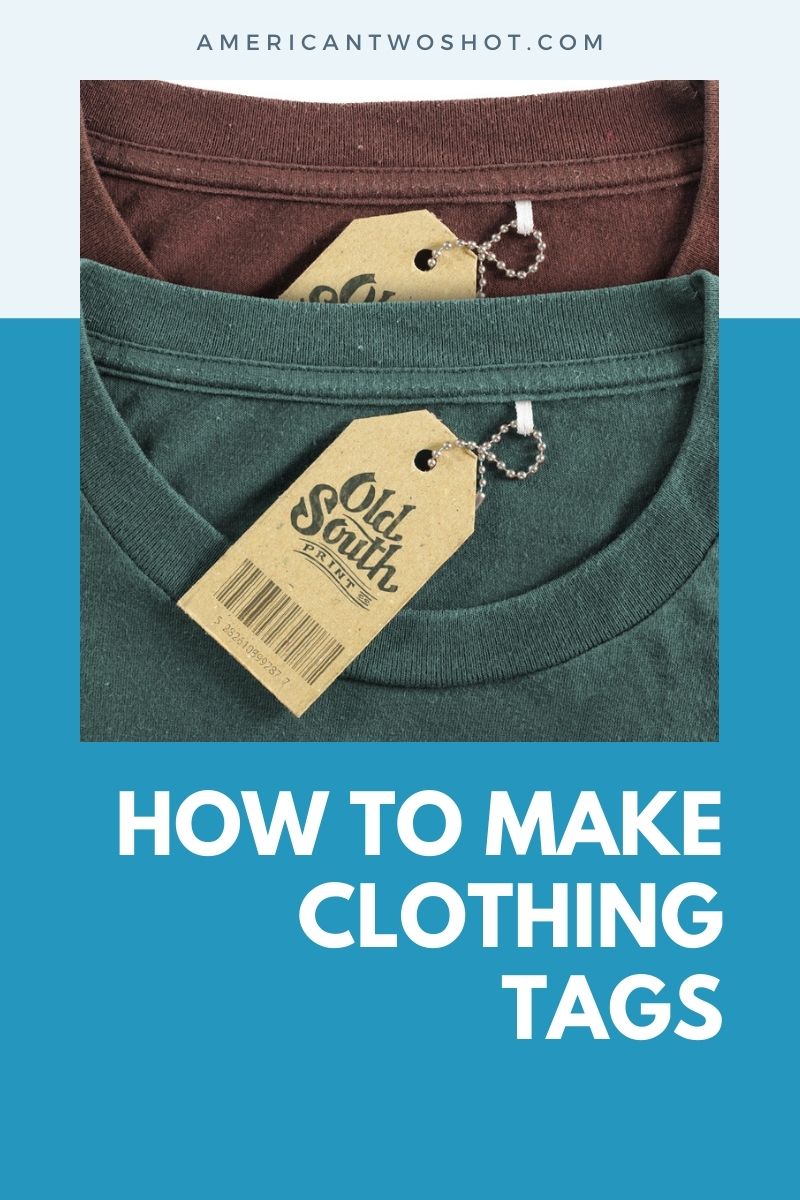“Do it yourself” stuff has been around for quite a long time and has been increasingly popular, especially on the internet. Making your own clothing and knowing how to make clothing tags allows you to infuse your clothes with extra creativity and let people take care of them more effectively.
What Are Clothing Tags?
Clothing tags are the labels that are usually found under your clothes. Here are the usual reasons for having tags on your clothes:
Inform consumers about the fabric and its composition
When purchasing clothes, it’s also important to check what type of fabric is used, so you can protect them better and prevent doing anything that will hurt the fabric. Informing people about the clothing’s composition also helps those who are allergic to it avoid purchasing it.
Care instructions and content labels
Clothing tags that involve the clothes’ composition and material details usually have with them the care instructions for the fabric. This way, you would know how to handle the fabric.
This includes washing, the maximum temperature it can handle, and other important do’s and don’ts for the piece of clothing. Mishandling clothes can cause the fabric to shrink, rip, discolor, and even affect the colors of your other clothes when washed together.
Some fabrics react differently to chemicals like bleach. Some materials also react adversely to heat, so these tags will help in explaining the right thing to do, the right temperature for you to wash them at, and some other important things to note.
Brand, Promotion, and Personality
Another reason for clothes to have clothing tags is for promotion and expression. Clothing lines and designers use the opportunity of labeling their clothes to promote their businesses. This way, people who like what they purchase will know who or what clothing line made the clothes they like so much. Putting clothing tags that promote your brand helps in selling the clothes too.
On the other hand, if the clothes were made exclusively or were custom-made by the owner and for the owner, the labels could also be an expression. Some designers let their clothing tags accentuate their designs. These tags also provide consumers with a sneak peek into the designer’s potential and creativity.
Types of Clothing Tags
Clothing tags add personality and showcase creativity. As a result, there are countless ways to personalize one’s clothing tags.You can go as simply or as creatively as you would prefer. Here are some of the clothing tag types you may or may not have seen on the market.
Swing clothing tags
Swing tags can come in different materials like paperboard, metal, fabrics, plastics, wood, and many more! Swing tags are the tags that are attached to a piece of clothing and are usually cut off by buyers after purchase. These tags usually contain the price and an extra promotion from the brand.
Woven/ Embroidered Clothing Tags
Unlike swing clothing tags, woven clothing tags cannot be easily removed after purchase. These types of tags usually stay on the clothes permanently unless they are otherwise cut or purposely removed. These types of tags usually contain the brand, fabric composition, or the important dos and don’ts.
Clothing Tags for Care and Content
These tags let consumers know more about the fabric and how they can effectively take care of their clothes. These tags usually contain the maximum temperature the fabric can take, the dos and don’ts, and etc. This way, you can maximize your clothes and keep them in the best shape for a longer time.
Non-woven Clothing Tags
These types of tags come in various types of fabrics and with the use of new and effective imaging techniques like printing, embroidery, and embossing.
Plantable Seed Clothing Tags
Plantable seed clothing tags have been the emerging darlings of the tag industry. Not only does it encourage planting, it also basically minimizes waste from your purchase. This tag is made up of biodegradable eco paper with plant seeds inside. When the tag is planted, the seeds start to grow, and the paper will compost away.
Making Your Own Clothing Tags
When creating your own clothing tag, you can be as creative as you can be and use something that represents your message. In the creative process, there is always inspiration and expression.
Whether it is for business or personal use, you would want your tag to send a message and at the same time promote your creativity and art. It’s all a matter of preference, and there are a lot of ways and methods for you to create your own tags.
Iron-on Transfer Paper Method
This method still involves printing, but on a different surface, and the process is slightly different too. For this method, you would need the following things.
- Computer
- Printer
- Iron-on transfer paper
- Iron
- Fabric, ribbon, etc. (according to your preference)
- scissors or a blade cutter
- Needle and thread
Steps:
- Craft your tag on your computer or any device that is comfortable for you.
- Print your designed tag on the iron-on transfer sheet you have prepared.
- Cut your labels.
- Iron them onto the fabric you have chosen. Make sure to read the instructions on how to properly iron the paper into the fabric.
Printing Labels on Fabric Sheets
Clothing tags are usually printed, and you can maximize that process too. To use this method, you would need to prepare the following:
- Computer / laptop
- Printer
- Fabric sheets for printers (laser printer/inkjet)
- Scissors or a rotary cutter
- Iron
- Needle
- Thread
- Sewing machine (you can choose whether you would do this by hand or by machine)
- Cold water
Steps:
- On your computer, you can start by creating your design and layout. What do you want your label to look like? Incorporate your ideas and your creativity until you come up with a design you are happy with. Remember to leave necessary spaces for when you stitch them.
- The next step would be to get it printed. Time to print your design on the fabric sheet you chose.
- Let the ink dry for 10 minutes.
- Remove the paper backing.
- Iron the fabric on high for 1-2 minutes. Make sure to iron on the printed side of the sheet. This will set the design on the fabric sheet. Take note that you should not apply too much pressure or force when ironing, as this could affect the print.
- Rinse the sheet in cold water and pat it dry. Use dry towels or paper towels when drying the fabric.
- Cut the sheets into labels, ready for sewing.
- The last step is to get the needle and thread and start sewing your label into the part of the piece of clothing you prefer.
Other Methods of Making Clothing Tags
Stamp-It
If you do not have a printer, you can use stamps instead. This method is quicker and easier too. You can buy a set of premade designs or you can also go to a shop that offers customized stamps.
Steps:
- Buy the stamps you deem useful for your design. You can customize it too.
- Choose a fabric that you like.
- Stamp away!
Just Order
There are also sites that offer to do all the work for you. You can choose from designs already in their inventory, or you can design your own and let them do the rest.
Tips for Making Clothing Tags
- When printing and working on fabrics, always take note of their nature. When using an iron or any tool that emits heat, different fabrics can react differently. Therefore, there is a risk of damage to your tags even before you finish making them.
- Before printing a whole bunch of copies, test the sheet first. Being careful is better than wasting a whole sheet of whatever surface you have chosen. Always have a piece of sheet as a tester.
- Edges of labels tend to fray if not sewn completely. You would want to clear the edges and make sure they don’t fray even after a long time.
- If you plan to mass produce your tag or if it is for a specific company and you would want it to look super professional, you can always opt to send your design and let a professional do the job for you.
- Be careful when using sharp things, especially scissors, cutters, or needles.
- For inspiration or samples, you can go around and scan your closet for samples. They might give you a new idea or inspiration. You can unlock a lot of things through research as well.
- Before finalizing the printables (when using methods that involve printing), leave enough space for you to effectively attach the labels to the clothes.
- Be as creative as you want to. You can choose any type of clothing tag and even create your own unique type of tag.
Summary
Learning and eventually mastering the art and process of how to make clothing tags is important for designers and passionate clothing artists. Clothing tags have a lot to say about the design and personality of a certain piece of clothing. The great thing about clothing tags is that you can create your own!

Jessica Oliver is a fashion enthusiast with more than ten years of experience in the industry. She previously managed her own clothing store in New York before becoming a mother of three. With a passion for sustainability and a desire to share clothing care and recycling tips.

